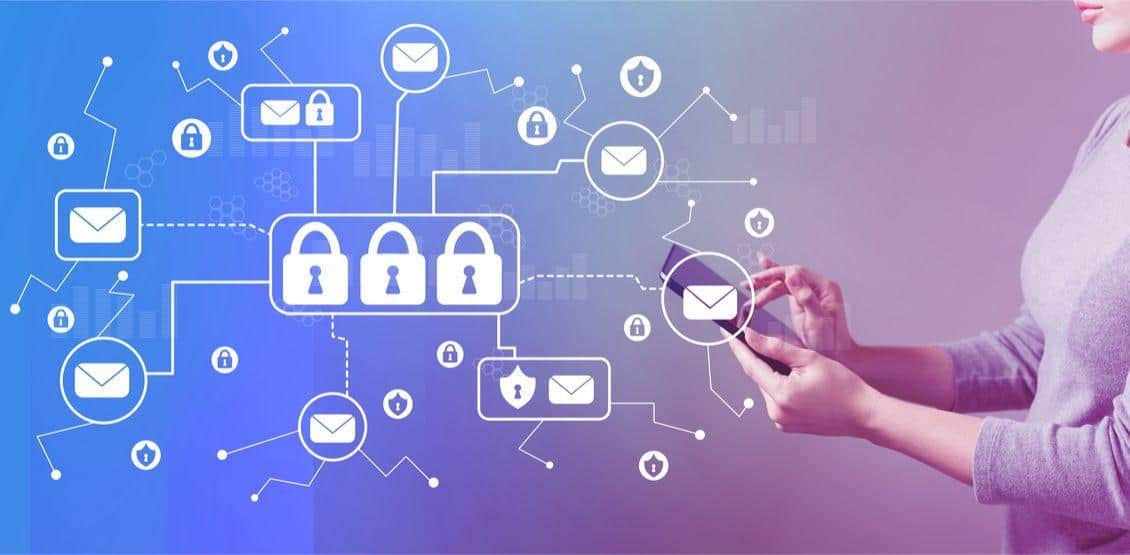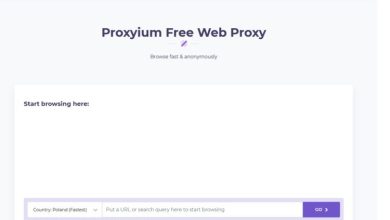
Even though many companies have recently shifted to chat and VoIP, email remains the primary communication way for the majority of them. It just goes to show that email security is still a concern in 2021. Here are some email security tips and tricks to follow for your peace of mind in 2021.
Email security: best practices
Here are the best practices to follow for your email security.
-
Examine your email habits
You may check your email numerous times a day, and you may do it without even realizing it. How many email newsletters and email lists do you subscribe to? How many websites have you given your email address to and never used?
What about your company’s email address? Do you spend a lot of time on email threads with people from outside your company? You should be able to select the best email solution for your company.Your email habits could be your biggest email security risk, especially if a fraudster discovers them, so analyze them and see what you can do to improve them.
-
Separate personal and work email accounts
You may have at least one personal and one business email account, if not more. Make sure they are not related in any way.
That means no personal email on the job, no work-related information on the personal email, and, most importantly, separate passwords for each.
-
Make a strong and one-of-a-kind email password
Most people use their passwords rather casually. Create a strong and unique password that is difficult to guess, including letters, numbers, and unusual symbols, as this may be the only thing standing between you and the hacker.
-
Use two-factor authentication (2FA)
Two-factor authentication, also known as 2FA, adds an extra layer of security between your data and possible hackers. This implies that, in addition to the password, you or anybody attempting to access your email account will be required to submit additional information, such as a passcode or token. This will be sent to you via another of your connected devices, such as your smartphone, making it incredibly difficult for the hacker to figure it out without having access to that device.
-
Don’t share your password
Don’t give out your password to anyone; it’s only as strong as you keep it private. If you receive an email or a phone call from someone claiming to be from Gmail or another organization, ignore it and don’t give them your password.
-
Avoid using public Wi-Fi
Let’s say you are at the airport and have some free time before your flight. Cool, watch some YouTube videos or read an intriguing article or book, but whatever you do, don’t log into your email using public WiFi, which is unsecured and could be monitored by a hacker looking for someone like you.
-
Make sure your device is “clean”
If your workplace has a “bring your own device” (BYOD) policy, make sure the device you’re bringing is malware-free, as this will leave you more vulnerable to hacking attempts.
-
Investigate suspicious email messages
Have you received an email that appears to be a little suspicious? Don’t respond immediately. Instead, spend some time examining it and the sender.
What is the best way to accomplish this? By looking up the subject line, sender or body of the message. This is most likely not the first (and certainly not the last) time the fraudster has tried something similar.
-
Do not open suspicious email attachments
The majority of email viruses are spread via email attachments. By just opening an insecure attachment, malicious software can be downloaded onto your software, giving the hacker complete control. Only open and click attachments from addresses you trust and are familiar with.
-
Investigate suspicious URL addresses
Stop and take a closer look if an email contains a URL address that the sender wants you to click on. Does it appear to be from a well-known company? Scammers frequently change just one letter in a URL to get you to click on it.
You’ll be taken to a phishing site where they can steal your personal and other sensitive information if you do so.
-
Use antivirus and anti-phishing software
Even if you don’t think you need antivirus software, it’s a good idea to have it installed on your computer just to be cautious. This will scan any email attachments before you download them to ensure they are safe.
-
Don’t give your personal information away
If someone asks for your personally identifying information (PII), such as your credit card number, social security number, phone number, birthday, address, don’t give it away.
No legitimate company will send you an unsolicited email requesting this information. If you receive it, it’s almost certainly a scam or phishing effort, therefore report it to the appropriate company.
-
Spam emails shouldn’t be “unsubscribed”
Scammers frequently include false “unsubscribe” links in their emails to lure consumers into visiting their phishing site. Let’s imagine you’ve opened a phishing site by accident. You find an unsubscribe link at the bottom and consider hitting it to avoid receiving any more emails from this scammer. Alternatively, the fraudster may provide an unsubscribe link or button in the email for you to click. Whatever the situation may be, do not click on it (or anything else in the email).
-
Don’t send private messages via work email
We’ve already mentioned that you should keep your business and personal emails separate, and you should make sure that your staff is doing the same.
This essentially entails ensuring that they are not utilizing their work email account to send or respond to personal communications, shop online, join social media or do anything else unrelated to business.
These guidelines should be followed by everyone in your company, from the CEO to the workers.
-
Make use of a robust spam filter
The spam filter on most popular email services, such as Gmail, Outlook, and Yahoo, is quite good. Most undesirable communications will be removed from your inbox as a result of this. However, some spam messages can penetrate holes from time to time. To avoid this, make sure the filter you’re using allows you to exclude emails that contain specific phrases or keywords. You can, for example, block emails that contain words like “weight loss,” “free iPhone,” and similar phrases.
-
Use SPF record to protect your email
SPF allows the receiver to reject an email received from an IP address that isn’t mentioned in your SPF record. Your customer does not get the email, and your brand and reputation remain intact. In order for your email to be delivered to them, many companies require SPF to be enabled for your domain.
-
Check your security and privacy settings
When was the last time you double-checked the security and privacy settings on your email? Have you done this since you originally installed your email client, or are you still using the default settings?
Check your email platform’s security and privacy settings every few months or so.
Internal emails should be double-checked
Although the vast majority of malware is transmitted through external email, some are also transmitted through internal email.
This is particularly true when an employee’s computer has already been compromised and they are inadvertently spreading viruses to others via email. If a coworker sends you a strange email link or attachment, double-check it with them.
Log out of your email when finished
You don’t have to do this if you only use your computer at home, but if you use a company-issued device to access your work email, always log out at the end of the day.
This is especially important if you need to carry your device around a lot since it will prevent someone from simply starting the email and gaining quick access to it if it is stolen.
Educate your employees
Cybersecurity training is an important component of your company’s overall cybersecurity strategy. Make sure that every employee in your business, from the top to the lowest, is trained on this and understands what the best email security practices are.
Send simulated phishing emails from an unknown account to your staff to see how they react. Explain what they were doing wrong if they reply, give out their PII, or click on unsolicited attachments and URLs.
Use encrypted email security solutions
Although TLS encryption is available in Gmail and similar email platforms, it will not be enough to protect your correspondence from hackers. Instead, you need a more secure email solution.
Conclusion
Email security is the complicated process of using defensive strategies and technology to keep email data and sensitive information safe. It all starts with knowledge and knowing what to do, and it’s critical for businesses to keep their data private and only accessible to the account’s owner.
You can help secure your corporate email accounts against email-borne threats by applying the corporate email security best practices for employees described in this guide. None of these email security best practices are designed to function alone; in order to achieve robust email security, you should use a combination of them to reduce potential vulnerabilities and threats.




